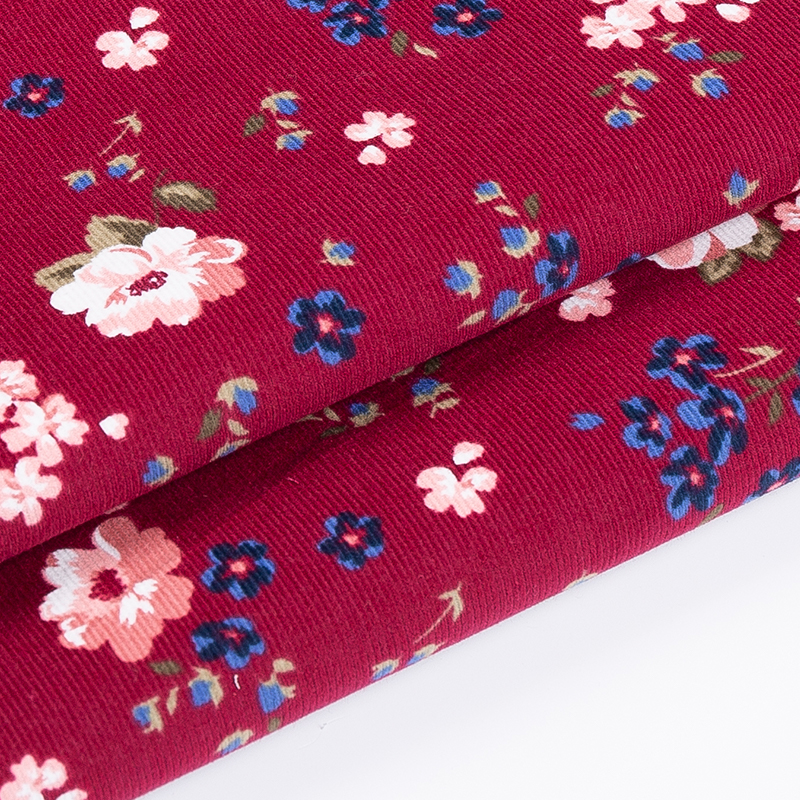When sourcing corduroy fabric for apparel, upholstery, or accessories, the choice between 100% cotton and blended versions is more than a matter of cost—it's a decision that affects texture, durability, elasticity, and final product appeal. As a seasoned manufacturer and exporter, we’ve worked with both types extensively and understand their nuanced differences, making it easier for you as a buyer to choose the right fabric for your application.
Cotton corduroy is prized for its softness, natural feel, and breathability. Its texture is typically more traditional, and its matte finish gives garments and furnishings a warm, organic aesthetic. For products where comfort and a natural look are essential—like autumn jackets, children's wear, or cozy home textiles—pure cotton is often the preferred choice. It also tends to perform well in dyeing, producing rich, deep tones that age gracefully over time.
Blended corduroy fabric, on the other hand, brings a different set of strengths. By incorporating fibers like polyester, spandex, or acrylic, the fabric gains resilience, flexibility, and sometimes even a subtle sheen. Polyester blends improve wrinkle resistance and shape retention, which is useful for high-volume wear-and-tear applications such as uniforms or travel garments. A touch of spandex, meanwhile, can add stretch, making the material more adaptive for form-fitting clothing without losing its signature wales.

Performance in washing and care routines is another consideration. Pure cotton corduroy can shrink slightly and may require gentler handling to preserve its pile and texture. Blended options often outperform here—holding up better under industrial laundering or long-term commercial use. This makes them a smart solution for upholstery, workwear, or export clients with stringent maintenance requirements. Our factory’s finishing techniques further help both variants meet international standards for durability and appearance retention.
From a production standpoint, weaving blended corduroy fabric requires precision to maintain the consistency of the pile and the structure of the ground fabric. The interplay of synthetic and natural fibers can introduce challenges in terms of tension control and dye uptake. But when done right, the results can be impressive: a stable, richly colored fabric that combines comfort with functional performance. This is where a reliable manufacturing partner makes all the difference—we engineer each fabric with your end use in mind.
For clients who need to strike a balance between tactile appeal and industrial functionality, blended corduroy may offer the best of both worlds. However, if your brand identity leans toward eco-conscious or premium natural materials, cotton corduroy still sets a strong standard. At the sourcing stage, we’re always available to help you weigh these variables and even offer custom blends tailored to your market’s specific expectations.
Ultimately, both 100% cotton and blended corduroy fabrics have their place in today’s competitive textile landscape. Understanding how each aligns with your product goals can enhance value and customer satisfaction. We invite you to explore our range of corduroy options—crafted with precision, delivered with reliability, and backed by years of textile expertise.



 English
English Español
Español May 23,2025
May 23,2025














 +86-519-86503571
+86-519-86503571
 Phone: +86-13218666905
Phone: +86-13218666905 Tel: +86-0519-86503571
Tel: +86-0519-86503571 Fax: +86-0519-86508551
Fax: +86-0519-86508551 E-mail:
E-mail: 